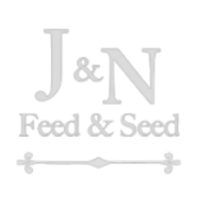A buck can have the best genetics in the world, but without the proper nutrition, he’ll never achieve his potential. One way to stack the deck in his favor is to supplement his nutrition. Fall is an excellent time to begin this.
But before we talk about how to initiate a supplemental feeding program, let’s evaluate the big picture.
The goal: Produce larger bucks with massive antlers. Some big obstacles to that goal:
- Lack of high quality forage in fall and winter.
- Stresses due to inclement weather.
- In fall, deer are heading into a natural period of low metabolism and poor appetite. During the rut, a buck may spend only 20 to 30 minutes per day eating.
- Burned calories during the rut will greatly deplete any existing stockpiles of nutrients.
- Antler growth is low on the priority list of functions required to sustain life, so next spring, antlers will receive “what’s left” of nutrients after life-sustaining needs have been met. Deer will not begin growing antlers until they’ve regained body condition.
- Nutritional deficiencies early in life can stunt a buck’s growth and antler size for the rest of his life, even if he is well fed as an adult.
The opportunity: Fall is one of the best times to initiate a supplemental feeding program because…
- Fall forage is less available and of poorer quality, so deer are already instinctively searching for new food sources and may be more accepting of an unfamiliar feed form.
- Getting deer to fully accept a feed form such as pellets can take weeks or months. By beginning the transition in the fall, deer can be fully acclimated by the time severe weather arrives.
- Antlers are high in protein content (which is why feeding corn won’t produce bigger antlers). Now is the prime time for the body to start stockpiling protein before spring antler-growing season.
- When a deer goes into winter in optimal body condition, it is less likely to deplete all of its nutrition stores by spring.
The plan: Now that we’ve established the need for a supplemental nutrition program, how do we do it? Here are a few basic steps:
- Provide the essentials. Deer need three basic things to survive and thrive—food, water and cover. If any one of these three critical factors is insufficient, deer will go elsewhere.
- Place your feeders along frequently used runways or trails.
- Be sure to place enough feeders so that deer do not have to travel more than one-half to three-quarters of a mile to a feeder. A good rule of thumb is one feeder per 300-400 acres.
- Make sure your feeding area has good visibility, access to fresh, clean water and an easy escape route to nearby cover.
- Place your feeders near the center of your land to keep deer on your property. Do not place feeders along fence lines, roads, power lines or in a large opening.
- Choose the right diet. With 16 percent protein, AntlerMax® Rut & Conditioning Deer
- Chow® 16 product is the ideal fall and winter body conditioning diet to set the stage for big antler growth next spring. It has a highly palatable, strong flavor to attract deer and AntlerMax® Deer & Elk Mineral supplement for strong, dense antler growth.
- One free-choice feeder can comfortably feed 25 free-ranging deer, each consuming 1 to 2 pounds of AntlerMax® Rut & Conditioning Deer Chow® 16 product per day.
- Deer do not recognize protein pellets as food, but they are accustomed to seeing corn as a food source in the wild. Entice them to the protein pellets by initially mixing corn with the pellets (start with 75 percent corn, 25 percent pellets).
- Deer do not like abrupt changes in feed, so make them gradually. Once deer are accustomed to eating protein pellets from a feeder, gradually phase out the corn. (NOTE: Although corn provides digestible energy, corn inherently lacks the nutrients needed for strong antler growth. Corn may help deer survive, but it won’t help them thrive. In fact, gorging on too much corn too fast can actually cause a deer to founder and die.)
- Remember, pellets should be a supplement to, not a replacement for forage.
- Make sure deer have access to a constant supply of fresh, clean water near your feeder. A deer requires about 3 pounds of water for every pound of dry matter consumed.
- Plan on feeding year ‘round so that bucks never slip into below-average body condition.
- Otherwise, next spring, nutrients will be allocated to “playing catch up” instead of to antler growth.
- Be sure to wear gloves when handling the feeder and feed. Human scent can repel deer.
- Don’t shoot yourself in the foot. Once you’ve spent all this effort to attract deer to a feeding area, NEVER hunt near the feeding area.
Don’t get discouraged. It won’t happen overnight. In fact, the better the forage conditions, the tougher it is to get deer to start eating pellets. But fall is a prime opportunity.
There are many, many more tips and strategies for establishing a successful supplemental nutrition program than we can include here.
Stop by J&N Feed and Seed in Graham, Texas and talk to us about your supplemental feeding needs. We’re here to help.





 Texas Parks & Wildlife released the 2018 – 2019 Hunting Season dates. Check them out below. You can find more information on their website.
Texas Parks & Wildlife released the 2018 – 2019 Hunting Season dates. Check them out below. You can find more information on their website.










